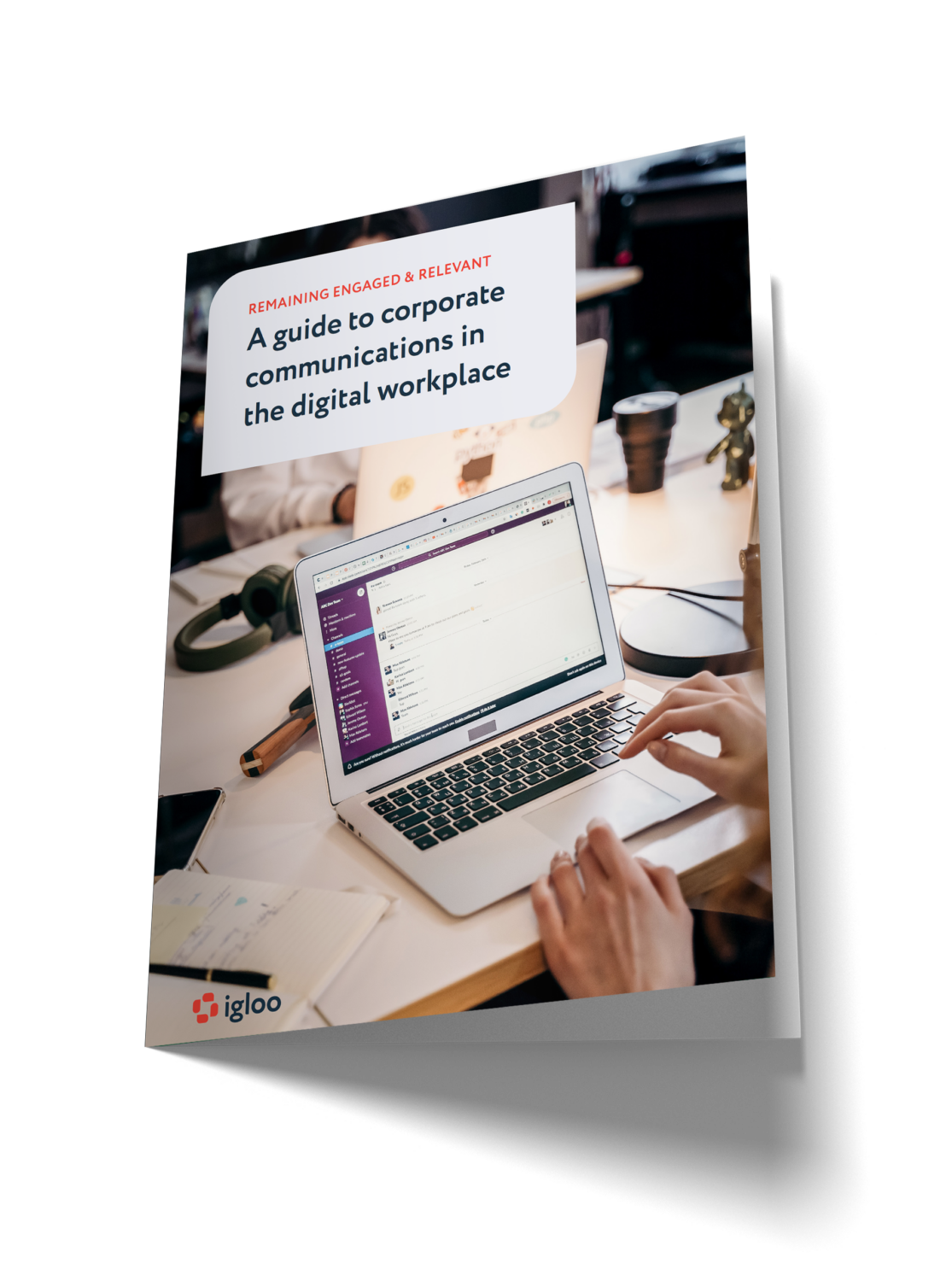Your Employee Engagement Action Plan: Now with Data
There are five steps to building an effective staff engagement action plan at work, and they all rely on strong engagement data. Start by establishing baseline engagement metrics, then build and iterate to find meaningful improvements in employee engagement.


It should come as no surprise that the most critical element of any employee engagement action plan is data; really, the first step in any strategy, employee engagement or otherwise, is to understand the scope of the challenge and the trends that define it.
But data about employee sentiment is elusive. Employee engagement surveys are one common method, but they only deal in broad strokes—and that’s assuming that employees are entirely honest about their feelings to begin with. If you want to build an action plan for employees that addresses everything from overall sentiment to specific engagement with individual pieces of content, you’ll need more.
Igloo has just released a suite of analytics and reporting tools that offer unparalleled transparency and insight into workplace engagement at every level. Let’s look at how you can leverage these tools to build an effective employee engagement action plan.
Table of contents
Step 1: Establishing Your Baseline
First, you’ll want to figure out where you stand. Igloo’s analytics tools are integrated with your digital workplace, and offer an easy way to measure engagement with your existing strategy. Start by identifying key pillars of your existing strategy, and generating reports on number of views, reader activity, employee engagement, and comments. Here are some common pillars that can help you find your baseline:
- Recurring communications like weekly or quarterly updates
- Keystone policies like health and safety, workplace conduct, etc.
- Integrated tools like HRIS, SharePoint, etc.
- Peer-to-peer activity like user-generated posts and comments
When you understand the engagement (or lack thereof) with your existing strategy, you can more accurately identify and achieve your engagement goals.
Step 2: Defining Your Goals
Now that we know where your challenges lie, it’s time to turn those challenges into goals. Pick out the areas that need improvement, and then identify those that align with your priorities. For instance, peer-to-peer engagement might be a nice-to-have for the short-term, while policy readership may be a major concern that takes priority.
Igloo’s analytics tools allow you to prioritize more effectively by not only identifying general areas that need attention, but by providing data on segments like teams or departments. This can be especially helpful when identifying goals, as it allows you to find teams that may have fallen off the radar, even if overall engagement looks strong. By digging deeper into the workplace engagement data, you can begin to structure a plan that keeps all teams aligned, engaged, and connected.
Learn more about Igloo’s analytics solutions.
Step 3: Building Your Engagement Pillars
With your goals clearly in mind, you can start turning them into an employee engagement action strategy. An easy and readily testable way to do this is to begin with your communications. Depending on the effectiveness of your existing engagement strategy, you may either want to optimize content within your existing framework, or start fresh with an entirely new framework.
For instance, perhaps your policies get low readership, but strong engagement with the few people who do view them. This could indicate an issue with navigation or distribution. Start by reducing the number of clicks to find key policies, and by making them more visible within your digital workplace. Then, include mention of these policies in an upcoming communication to the employees who need to see them.
Your employee communications are even easier to optimize—in a way. Take an iterative approach, identifying engagement overall, and with specific employee groups. Here are some basic controls you can adjust to achieve better employee engagement:
- Length: Often, shorter communications will get better engagement.
- Language: Try different tones of voice to engage your audience.
- Targeting: Are you matching the message with the right audience?
- Cadence: Communicating too much or little can strain engagement.
- Context: Supporting resources and info can help engagement if linked in communications.
Use your goals from step 2 to help define the pillars you’ll work on in this step, and then build out your new approach accordingly. It’s important that these pillars are consistent, significant, and easy to measure and adjust.
IGLOO EBOOK
A Guide to Corporate Communications

Step 4: Reevaluating & Optimizing
Run your new employee engagement program for long enough to gather actionable data; this could be anywhere from a few weeks to a couple of months. As you go along, gather reports on each communication, as well as comparison points on more static pillars like policy documents.
Once you’re confident you have a statistically representative amount of data, compare it to your previous efforts and to your own expectations. Did your intentions align with your results? If not, trends in readership can help validate or disprove your initial approach. No matter the outcome, don’t worry! Any data is good data for this step, which is optimizing.
Use the new reports to find your next set of challenges, whether those are the same challenges you started with, or newer and smaller areas of concern. The goal is to go through this motion continuously, integrating it into your communications and management strategy so that you can constantly adapt to and meet employee expectations, thereby improving engagement.
After a few cycles of evaluation and optimization, you should start to see real changes in the metrics. Content will become more relevant to the different priorities of your many teams, and the way you deliver and present that content will better align with employee needs.
Step 5: Branching Out
Now that you have a strong command of your basic pillars of engagement, it’s time to build on them. You can gradually begin to add in other priorities that may not have been significant enough to address before now, or which have arisen since you began. The same approach applies here as in previous steps: define your plan based on the available data, collect more data, and optimize.
Conclusion
And that’s it! Much of the ensuing changes and optimizations will depend on the nature of your organization and the challenges you’d like to resolve, but no matter what that looks like, Igloo’s analytics and reporting tools make it simple to identify a path to greater employee engagement, compliance, and productivity.
To learn more about Igloo’s analytics tools and how they can help you build your employee engagement action strategy, get in touch today.





